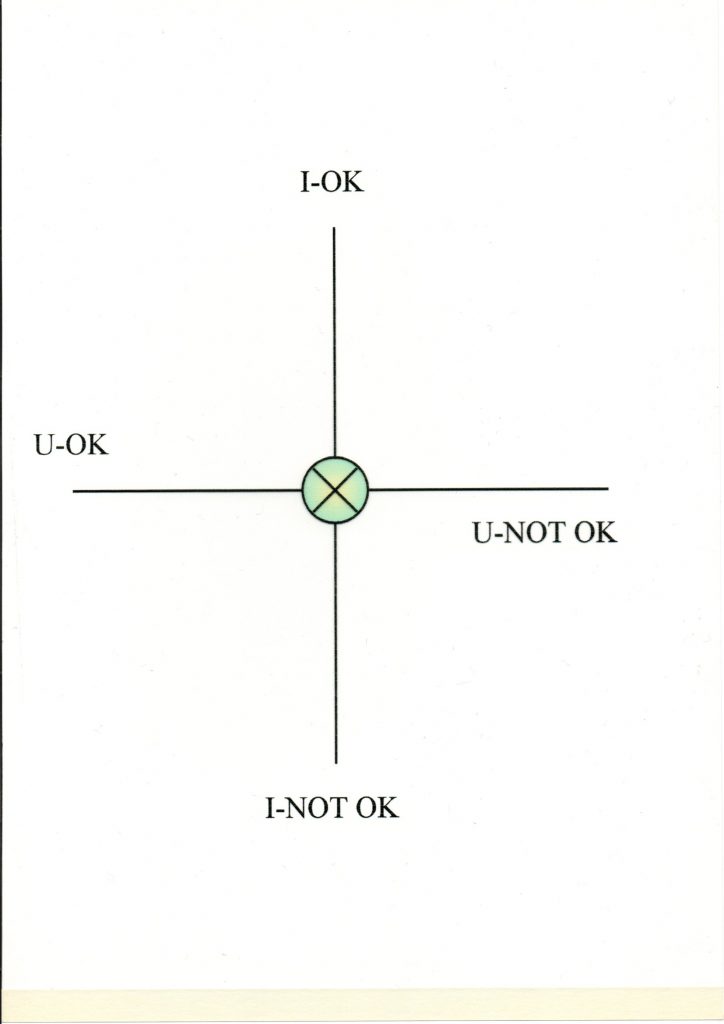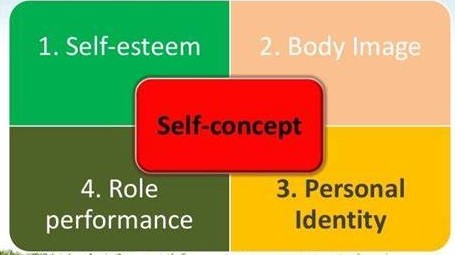I have been asked about safe experiments that can improve self-esteem or self-confidence.
There is a practical workbook containing many safe experiments, as well as helpful explanations relating to self-esteem, see:
Judy Bartkowiak (2013) The Self-esteem Workbook Hodder and Stoughton
I have a problem with the phrase, ‘self-esteem’. It is made up of several different things and some are listed in my header illustration. I know it is about my sense of being OK …. I am some-one to value just because, but self esteem is a slippery notion and encourages us to notice low self-esteem in the main.
Self-esteem and “OKness”
For that reason, I like the Transactional Analytic (TA) model and its notion of the Life Position (a sense of our OKness). The OK Corral, diagram below, helps us to examine ‘self-esteem’ more closely.
High self-esteem is more likely when our Life Position is I am OK, and You are OK too. Self-esteem will decrease as we see ourselves as Not OK. This can become a bigger problem when I am Not OK, but others are seen as OK (bottom left quadrant). Things get even trickier still when the position is I am Not OK and You are Not OK either (bottom right).
The diagram shows I can feel degrees of OKness about myself – from (I-OK) to not (I-NOT OK) – on the vertical axis. Other people are located on the horizontal line from U-OK on the left, to U-NOT OK on the right. Any relationship may be fluid, but some develop a pattern over time. One that fits into one quadrant, for example: I’m OK; You are OK (top left).
TA says we are born OK, but we tend to take on board messages that question that starting position. In time, it can become easier to drift into a view of the world, based on me, being not being OK after all.
The OK Corral

The diagram points out that complications arise when we meet other people, especially our early care-takers. It is possible to fall into believing that OTHERS are not OK (U-NOT OK). Effort is needed to see others are OK (U-OK): on the left of the horizontal line.
“OKness” alters as we grow and develop relationships with others
As we grow older, depending on our upbringing, it can become difficult to adopt the position of I am OK, and You are OK too. Changing expectations can lead us to the view that I am OK and you are not OK (top right box in the matrix).
The other alternatives identified are:
I am not OK, You are OK (bottom left), or
I am not OK, and you are not OK either (bottom right).
Self-esteem, TA Games and “OKness”
The TA model developed a set of ideas called Games Theory; this material helps to identify how our sense of ‘OKness’ works out in daily living. ‘Games’, in the TA sense of the word, tend to be ways to avoid intimacy and genuineness; to bolster our flagging self-esteem.
Safe Experiments
What safe experiments might help us to adopt a more flexible Life Position – one that moves away from ‘negative’ positions, and more towards I am OK and You are OK too?
Judy’s book has many concrete examples. Even so, remember that effective safe experiments depend on a translation of her ideas into your daily life. Even so, let’s take just a few ideas:
AN EXPERIMENT
Do you have a ‘favourite’ box in the OK Corral – one you spend most of your time in? If you conclude that you travel around all four boxes, do you notice how some specific relationships seem to fit more into one box, rather than another?
For instance, do you have a boss? Maybe you ARE the boss? What Life Position do you adopt when you think of your boss or meet them? Are you OK and is the Boss OK? What situations at work lead you to I am NOT OK and the Boss to be OK? More importantly, what might you do differently next time some challenging situation arises at work?
SOME MORE EXPERIMENTS
Do you notice a tendency to say ‘sorry’ a lot. Are you content with your level of ‘sorries’. If not, how might you edit them before they come out of your mouth. How do you notice the impact on you when a ‘sorry’ is successfully edited? Do not assume it will feel good – a relief. You may be swimming against the tide – after years of training!
Notice how recording results is important, One ‘sorry’ may produce one reaction, and another ‘sorry’ will do something very different. What about the ‘sorries’ that you do not notice until it is too late? What can you do about those small defeats?
AND MORE
What about saying ‘no’ to other people? How good are you at that and what else do you do after you say ‘no’. If you co-operate or comply with others a lot, can you find an opportunity to say ‘no’, noticing, all the while, the impact of your different behaviour. Be prepared to take the consequences of saying ‘no’.
Do a Body Scan after saying ‘no’ and/or editing a ‘sorry’. What feelings arise when you behave a little bit different? What do you do with the feelings that arise: can you just notice them, and not seek to avoid them? Do they encourage you to slide in ‘catastrophising’ because you have behaved so out of character?
JUST ONE MORE
One safe experiment put to me by some-one I know was:
“What would my best friend say to me“
I like this experiment as it helps view ourselves us as other see us. The Johari Window has something to say about this feature. Also, it helps us notice that we can give out advice, and not necessarily accept it for ourselves!
As far as self-esteem is concerned, this question ensures we test our own view against the views of others. It is not a question of whose judgment is right or wrong; rather it is an encouragement to do something a little bit different next time.
Most aspects of my how to … blog can cast light on our ability to just notice how our self-esteem can go up and down. I have includes a section on The Karpman Triangle as yet another way to cast light on this slippery topic.
Concluding note: Chapter 10 of Judy’s book focuses on the Karpman Triangle, but I have added a TA dimension to it.
Return to
What is helpful change?Obstacles to safe experimenting
Affirmation work